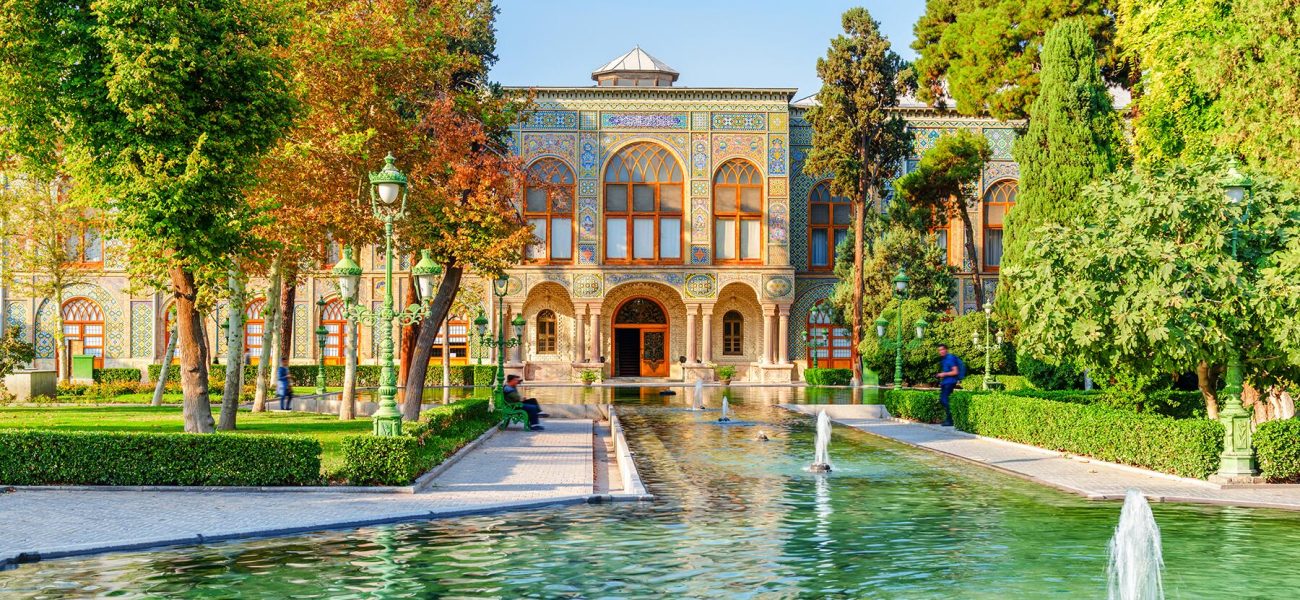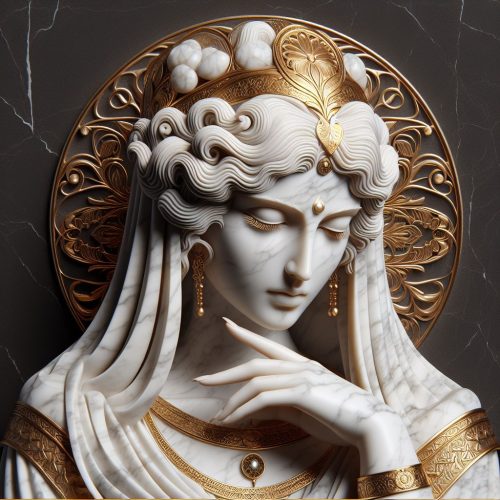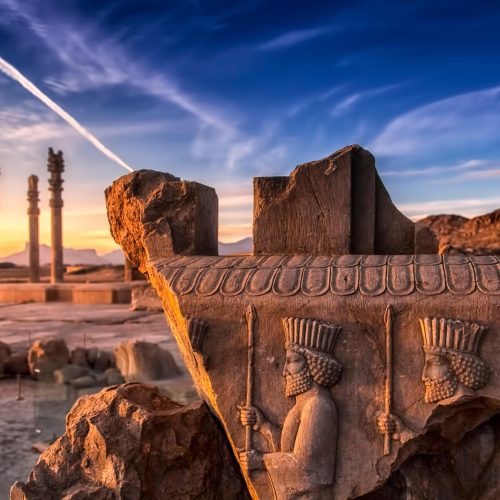By: The Iranian Ministry of Cultural Heritage, Tourism, and Handicrafts
As we celebrate World Tourism Day, there is no better moment to extend an open invitation to all travelers from across the globe to experience a land where history, culture, and natural beauty converge in spectacular ways—Iran! It is a nation brimming with life, a crossroads of ancient civilizations and modern vibrancy, a place where hospitality is a deep-rooted tradition and every visitor is welcomed with open arms.
Iran, often referred to as the “Jewel of the Middle East,” offers a travel experience unlike any other. With its stunning landscapes, from towering mountains to endless deserts, and its millennia-old history preserved in world-class heritage sites, Iran is a destination that promises both adventure and serenity. If you’ve ever dreamed of exploring the unknown, walking through the ruins of empires, or simply sipping tea with friendly locals under a starry desert sky, Iran is your next great adventure.
Let me take you on a journey through this incredible land, urging you to experience Iran in all its glory. Let’s celebrate World Tourism Day by discovering why Iran should be at the top of your travel list.
Discover Iran’s Ancient History: A Journey Through Time
One cannot speak about Iran without marveling at its extraordinary history. Iran is one of the world’s oldest continuous civilizations, with settlements dating back over 7,000 years. Throughout this rich past, Iran has been home to great empires, from the Elamites to the Achaemenids, the Parthians, and the Sassanids. Each has left its mark, not just on Iran but on the entire world.
Tourists who step into Persepolis, the ceremonial capital of the Achaemenid Empire, are transported to the heart of one of history’s most sophisticated ancient civilizations. Imagine walking the same stone steps that Persian kings, ambassadors from distant lands, and royal courtiers once walked! The towering columns, intricate reliefs, and massive stone structures of Persepolis are a testament to the might and grandeur of the Persian Empire.
Nearby, the Tombs of Naqsh-e Rustam house the resting places of Darius the Great and other mighty Achaemenid rulers. These rock-cut tombs, perched high on a cliff, evoke awe and reverence for the civilization that sculpted such grandeur thousands of years ago.
But Iran’s history is not confined to the pre-Islamic period. Visitors can explore the magnificent Imam Mosque and Sheikh Lotfollah Mosque in Isfahan, marveling at their intricate blue-tiled domes and geometric designs. The heart of Persian architecture pulses in these structures, where artistry meets spirituality. To stand in the center of Naqsh-e Jahan Square, the second-largest square in the world, is to feel Iran’s history come alive around you.
Shiraz, the city of poets and gardens, offers travelers a chance to visit the tombs of two of Iran’s most beloved literary figures, Hafez and Sa’di. Imagine standing by the tomb of Hafez, reciting his timeless poetry alongside fellow visitors from every corner of the world, all of whom have been touched by his eloquent words. Iran is a land where poetry lives, breathes, and has the power to connect hearts across borders.
This is just the beginning. Iran’s historical treasures are not confined to a few famous landmarks, but are scattered throughout the entire country. From Susa, the ancient city that once rivaled Babylon, to Bam, the desert fortress that has stood sentinel for over a thousand years, every corner of Iran is steeped in the past.
Iran’s Natural Wonders: From Mountains to Deserts
For those with a thirst for adventure and natural beauty, Iran offers a landscape as diverse as its history. Whether you’re a mountaineer, a desert wanderer, or a beach lover, Iran’s natural wonders are sure to leave you breathless.
Do you dream of conquering towering peaks? Iran’s mighty Alborz Mountains will rise to your challenge. The jewel of this range is Mount Damavand, the highest peak in the Middle East and a dream for any mountaineer. Standing at 5,671 meters, Damavand offers not only a thrilling ascent but a symbolic journey—one that is deeply woven into Persian mythology, where legends of heroes battling demons come to life.
For the traveler seeking tranquility, Iran’s deserts—like the vast Dasht-e Kavir and the rolling dunes of the Lut Desert—offer endless horizons and some of the clearest night skies on Earth. Spend a night in a traditional caravanserai, those ancient inns that once served Silk Road travelers. Picture yourself gazing up at the stars in the silent embrace of the desert, with nothing but the gentle whisper of the wind around you. Iran’s deserts are more than mere landscapes; they are gateways to a spiritual experience that can only be found in the serene emptiness of nature.
But Iran’s natural beauty does not end with mountains and deserts. Head south to the lush forests of Gilan and Mazandaran, where the Caspian Sea meets emerald green landscapes. Or visit Hormuz Island in the Persian Gulf, where the shores are painted in hues of red, yellow, and orange, as though nature herself were an artist spilling color onto a canvas. Hike the island’s alien landscapes and swim in the warm waters of the Gulf.
Iran is a land where you can experience all four seasons at once. Imagine skiing in the mountains of Dizin while, just a few hours away, you could be exploring the ancient ruins of Yazd under a blazing desert sun. Iran’s unique geography ensures that no matter your taste in adventure, you will find a landscape that beckons.
Meet Iran’s People: Hospitality Beyond Borders
If there is one thing that every traveler to Iran remembers, it is the unparalleled hospitality of its people. Iranians have a saying: “A guest is a gift from God,” and they live by this belief. From the moment you set foot in the country, you will be met with warm smiles, open arms, and invitations to share tea or a meal.
In a world often divided by politics and misunderstandings, Iran’s people stand as ambassadors of goodwill, eager to share their culture and stories with visitors. Whether you find yourself wandering the bustling bazaars of Tehran, exploring the ancient alleys of Yazd, or sipping tea in a traditional teahouse in Shiraz, you will undoubtedly find yourself invited into someone’s home, where stories are shared over platters of fragrant saffron rice and juicy kebabs.
And let’s not forget Iran’s fabled tea culture. There’s no better way to immerse yourself in the heart of Persian daily life than by sitting down for a cup of tea, sweetened with sugar cubes and shared in good company. Visit a traditional chaikhaneh, or teahouse, where you can not only enjoy a cup of tea but also listen to Persian classical music, watch traditional performances, and, if you’re lucky, catch a spontaneous poetry recitation from one of the locals.
Travelers from around the world often comment on how safe they feel in Iran, despite preconceived notions they may have had. This is not just a testament to the natural beauty and historical wealth of the country but to the kindness and generosity of its people. In Iran, every traveler is treated like a guest, every guest is treated like family, and every interaction leaves a lasting impression.
Iranian Cuisine: A Feast for the Senses
No travel experience is complete without indulging in the local cuisine, and Iranian food is an adventure all its own. Persian cuisine is a feast for both the eyes and the palate, with a delicate balance of flavors and aromas that has been perfected over centuries.
Iran’s culinary traditions vary from region to region, offering a delightful array of dishes for every traveler to savor. Start your culinary journey with kebabs, juicy and flavorful, served with fragrant basmati rice and grilled tomatoes. But don’t stop there—venture into the world of Persian stews, like ghormeh sabzi, a herb and lamb stew simmered to perfection, or fesenjan, a rich pomegranate and walnut stew that is equal parts sweet and tangy.
For vegetarians, Iran offers an abundance of sabzi (herbs) and fresh vegetables. You can’t leave without trying mirza ghasemi, a smoky roasted eggplant dish from the northern provinces, or the array of fresh herb salads and appetizers that accompany every meal.
Iran is also famous for its sweet treats. Be sure to sample baklava from Tabriz, sohan (saffron brittle) from Qom, and the delicate gaz (nougat) from Isfahan. Paired with a cup of strong Persian tea, these sweets will transport you to the very heart of Iran’s rich cultural traditions.
No matter where your travels take you in Iran, you are guaranteed to enjoy meals that are not only delicious but prepared with love and care. Iranian cuisine is a reflection of the culture itself—generous, warm, and made to be shared.
Cultural Experiences: Handicrafts, Bazaars, and Festivals
Iran is a country of artisans, and its rich tradition of handicrafts is yet another reason for travelers to visit. From intricate Persian carpets to delicate miniature paintings, Iran’s craftsmanship is renowned worldwide. Every region of Iran boasts its own unique artistic traditions, passed down through generations.
Visit the bazaars—vibrant, bustling markets that are the beating heart of every Iranian city. In these bazaars, you will find everything from handwoven textiles and pottery to intricate metalwork and dazzling jewelry. The Grand Bazaar of Tehran, Vakil Bazaar in Shiraz, and Bazaar of Isfahan are must-visit destinations for anyone interested in Iran’s artisanal heritage.
Iran’s festivals are also a rich part of its cultural fabric. If you visit during Nowruz, the Persian New Year, which coincides with the arrival of spring, you will witness a celebration of renewal and joy. Homes are decorated with Haft-Seen tables, and families gather to celebrate new beginnings with traditional foods, music, and dance. The Fire Festival (Chaharshanbe Suri), held just before Nowruz, is an exhilarating event where bonfires are lit in streets, and people jump over them as a symbol of purification.
For those interested in Iran’s spiritual traditions, the Day of Ashura offers a profound glimpse into the country’s religious life. This day, which commemorates the martyrdom of Imam Hussein, is marked by processions, reenactments, and rituals that speak to the deep sense of faith and community within Iranian society.
The Ease of Traveling in Iran: Practical Tips for Tourists
Now, you might be thinking: Iran sounds amazing, but how easy is it to travel there? The good news is, traveling in Iran is not only possible—it’s easier than you might think. Over recent years, the Iranian government has worked hard to improve the country’s tourism infrastructure. From visa facilitation to new hotels and better transportation, Iran is more accessible than ever before.
Most international tourists can obtain a visa on arrival, and there are flights connecting Iran’s major cities with destinations across Europe, Asia, and the Middle East. Once in the country, you’ll find a wide range of accommodation options, from luxurious hotels to charming boutique guesthouses and eco-lodges.
Iran’s road and rail networks make it easy to travel between cities, and domestic flights are an affordable option for those looking to cover large distances quickly. Whether you want to explore the bustling streets of Tehran, the historic grandeur of Isfahan, or the ancient ruins of Persepolis, you’ll find that Iran is well-equipped to welcome international visitors.
Conclusion: An Invitation to Experience Iran
On this World Tourism Day, I urge you to seize the moment. Visit Iran—a land where every stone tells a story, every meal is an act of love, and every person you meet is ready to share their world with you. Iran is a destination for the curious, the adventurous, and the open-hearted. It’s a place where history, culture, and nature blend seamlessly into an unforgettable journey.
As an official from the Iranian Ministry of Cultural Heritage, Tourism, and Handicrafts, I extend my heartfelt invitation to travelers from all corners of the globe. Whether you come to witness the glory of Persepolis, wander the ancient streets of Yazd, or simply sit by the shores of the Caspian Sea, you will leave with memories that will last a lifetime.
So, pack your bags, open your heart, and get ready to explore one of the most captivating destinations in the world. Iran awaits you.




